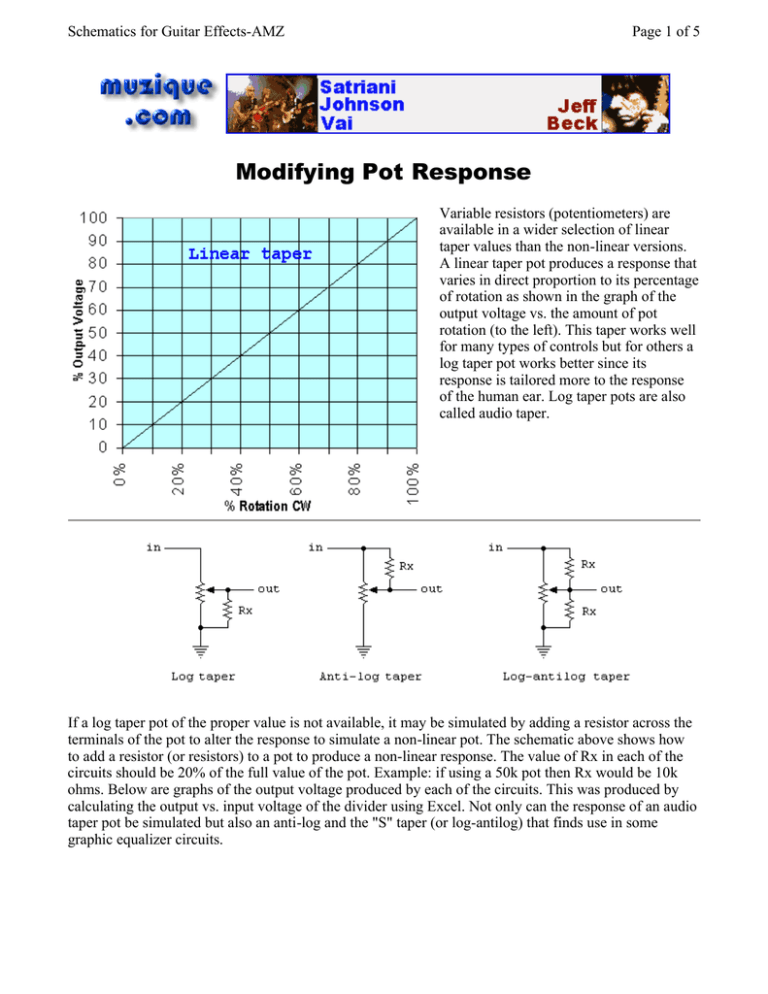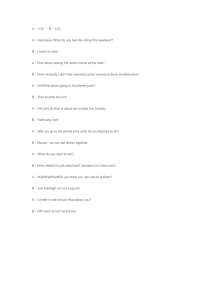
Schematics for Guitar Effects-AMZ
Page 1 of 5
Modifying Pot Response
Variable resistors (potentiometers) are
available in a wider selection of linear
taper values than the non-linear versions.
A linear taper pot produces a response that
varies in direct proportion to its percentage
of rotation as shown in the graph of the
output voltage vs. the amount of pot
rotation (to the left). This taper works well
for many types of controls but for others a
log taper pot works better since its
response is tailored more to the response
of the human ear. Log taper pots are also
called audio taper.
If a log taper pot of the proper value is not available, it may be simulated by adding a resistor across the
terminals of the pot to alter the response to simulate a non-linear pot. The schematic above shows how
to add a resistor (or resistors) to a pot to produce a non-linear response. The value of Rx in each of the
circuits should be 20% of the full value of the pot. Example: if using a 50k pot then Rx would be 10k
ohms. Below are graphs of the output voltage produced by each of the circuits. This was produced by
calculating the output vs. input voltage of the divider using Excel. Not only can the response of an audio
taper pot be simulated but also an anti-log and the "S" taper (or log-antilog) that finds use in some
graphic equalizer circuits.
Schematics for Guitar Effects-AMZ
Page 2 of 5
Schematics for Guitar Effects-AMZ
Page 3 of 5
Additionally, a linear pot used as a variable resistor can have its response modified into anti-log
response by adding a resistor as shown below. The resistor chosen for this example is slightly larger
than 20% of the pot value so that the parallel resistance of the pot with added resistor will be close to
100k. The anti-log response is useful in many variable resistance circuits, such as the frequency control
of oscillators. Note that it is not possible to simulate log response with this technique. The unused end
terminal of the pot is not connected in the diagram for clarity, but it may be connected to the outside pot
terminal (that does not have the resistor soldered to it) without effecting the response.
Schematics for Guitar Effects-AMZ
Page 4 of 5
Schematics for Guitar Effects-AMZ
Page 5 of 5
This article reproduced from the AMZ-CD
Not for reproduction on any web site
©1999 Jack Orman
All Rights Reserved
Back to the Analog Music Zone

